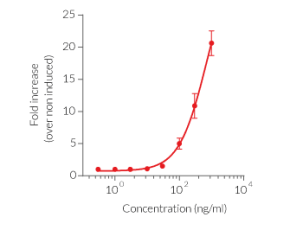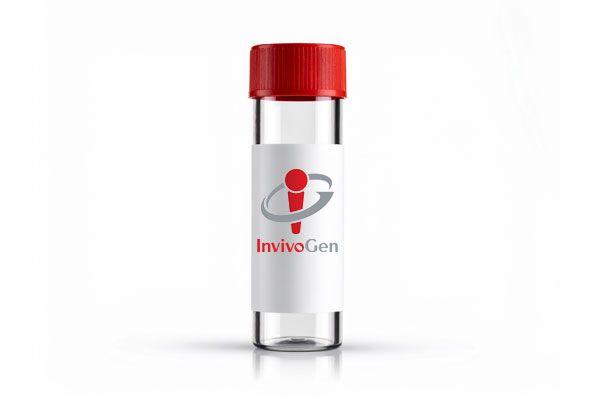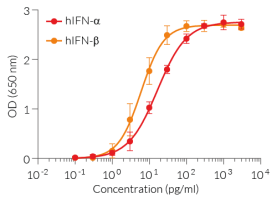Poly(dA:dT) Rhodamine
-
Cat.code:
tlrl-patrh
- Documents
ABOUT
Rhodamine labeled double-stranded B-DNA
Poly(dA:dT) Rhodamine was chemically labeled by covalent coupling of a rhodamine probe containing a reactive alkylating group. This confers fluorescent properties to Poly(dA:dT) with a slight reduction of pattern recognition receptor (PRR) stimulatory activity.
Poly(dA:dT) is a poly(deoxyadenylic-deoxythymidylic) acid sodium salt and a repetitive double-stranded DNA (dsDNA) sequence of poly(dA-dT)•poly(dT-dA). Poly(dA:dT) is a synthetic analog of B-DNA.
Intracellular poly(dA:dT) is recognized by several cytosolic DNA sensors, triggering an immune response.
Furthermore, poly(dA:dT) is indirectly sensed by RIG-I leading to type I IFN production.
All products are for research use only, and not for human or veterinary use.
SPECIFICATIONS
Specifications
RIG-I, CDS, AIM2 inflammasome
100 ng - 10 µg/ml
1 mg/ml in physiological water (150mM NaCl)
The absence of bacterial contamination (e.g. lipoproteins and endotoxins) has been confirmed using HEK-Blue™ TLR2 and HEK‑Blue™ TLR4 cells.
Flow cytometry, fluorescence microscopy, confocal microscopy
Fluorescent RLR labeling
Flow cytometry
Fluorescent microscopy / Confocal
PRR ligand binding studies
Each lot is functionally tested and validated.
Spectral Properties of Rhodamine
- Excitation λ max: 546 nm
- Emission λ max: 576 nm
CONTENTS
Contents
-
Product:Poly(dA:dT) Rhodamine
-
Cat code:tlrl-patrh
-
Quantity:10 µg
1.5 ml sterile endotoxin-free water
Shipping & Storage
- Shipping method: Room temperature
- -20°C
- Avoid repeated freeze-thaw cycles
- Protect from light
Storage:
Caution:
DOCUMENTS
Documents
Technical Data Sheet
Safety Data Sheet
Certificate of analysis
Need a CoA ?




